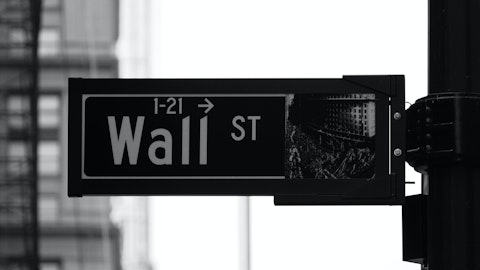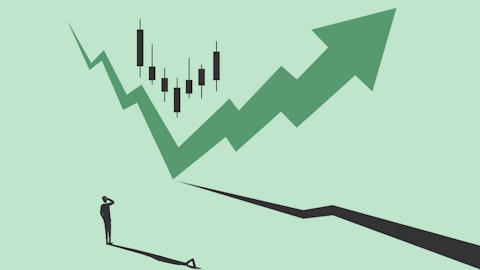In this article, we will discuss the 5 Largest Retailers in the US in 2022. If you want to read our analysis of the retail market, you can head on to the 15 Largest Retailers in the US in 2022.
5. Lowe’s Companies, Inc. (NYSE:LOW)
Market Cap: $115.75 billion
Lowe’s Companies, Inc. (NYSE:LOW) is the world’s second-largest home improvement retailer operating with 1,969 locations and 230 dealer-owned stores across Canada and the United States. The company offers products mainly in the home décor category, which accounts for about 65% of the company’s total sales. Based on US Census statistics and management’s estimations of market size, Lowe’s Companies, Inc. (NYSE:LOW) has a double-digit share of the domestic home improvement market. The company’s key customers include professional business clients and individuals.
Lowe’s Companies, Inc. (NYSE:LOW) is expected to post sales of over $97 billion in the fiscal year 2022, as compared with $96 billion in the fiscal year 2021. The company is planning on reducing its exposure to the Canadian market and recently announced the intention to sell its Canadian business for $400 million to private equity firm Sycamore Partners.
Ackman discussed some of the secular tailwinds he expects Lowe’s Companies, Inc. (NYSE:LOW) to benefit from over the long-term in Pershing Square’s Q2 2022 investor letter:
Lowe’s Companies, Inc. (NYSE:LOW) ‘s is a high-quality business with significant long-term earnings growth potential underpinned by a superb management team that is successfully executing a multi-faceted business transformation.
COVID-19 was a transformational event for the US housing market, causing homeowners to invest significantly in their homes as they shifted nearly all their daily activities to the home environment, including work, school, and leisure. The increased use of the home during COVID, in turn, increased the need for repair, maintenance and remodel activity, which significantly benefited Lowe’s same-store sales. As consumers return to spending more time and money on out-of-the home activities the near-term demand for certain Do-It-Yourself (“DIY”) categories has decreased. Moderation in DIY demand combined with increased mortgage rates and decreased housing affordability has caused many market participants to become concerned that the home improvement industry may give up a significant part of their COVID pandemic sales gains.
While we expect that there will be some near-term volatility and continued moderation of DIY demand, growth remains strong for projects requiring professional installation (the “Pro” business) due to a substantial backlog of projects undertaken during COVID, which should support industry growth in the near-term. In addition, we believe the medium[1]term growth outlook for the home improvement industry remains strong as demand is likely to normalize at a materially higher level as compared to the pre-COVID era. For the decade prior to COVID, home improvement industry sales were notably depressed relative to their long-term averages as a percentage of overall consumer spend and GDP and have only now returned to their longer-term historical levels. Moreover, we believe COVID has permanently renewed consumers’ focus, appreciation, and utilization of their homes, which combined with higher home equity values, strong consumer balance sheets, low levels of home inventory for sale and an aging housing stock that requires an increasing level of maintenance, will likely result in a structurally higher level of ongoing home industry spending in the future. In the most recent quarter demand strengthened throughout the quarter as DIY consumers returned from summer vacations and focused on less seasonal home improvement projects… (Click here to read the full text)





